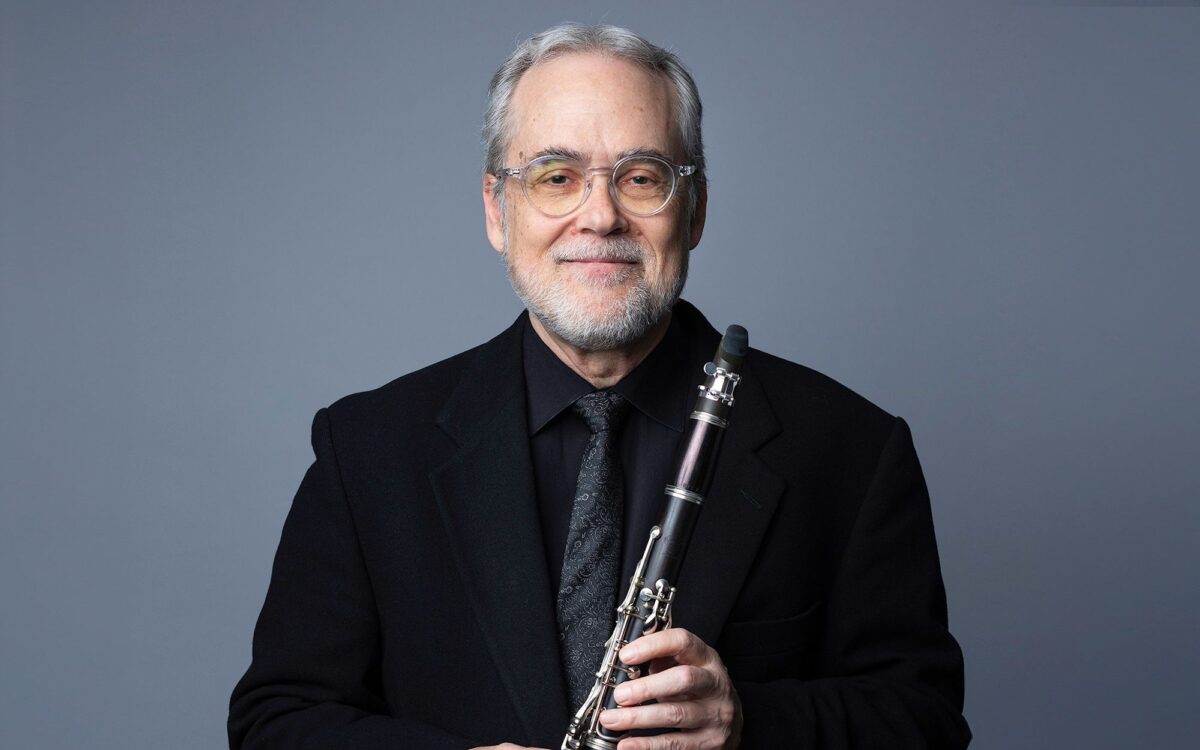Clarinet Concerto
Aaron Copland was born in Brooklyn, New York, on November 14, 1900, and died in Peekskill, New York, on December 2, 1 990. He began his Clarinet Concerto in 1947 but composed most of the work during the summer of 1948. It was commissioned by Benny Goodman, who gave the first performance on November 6, 1950, in a radio broadcast with the NBC Symphony Orchestra, Fritz Reiner conducting.
In addition to the soloist, the score calls for a string orchestra plus harp and piano. The concerto is about 18 minutes long.
Early in his career Copland had adopted some of the rhythmic elements and characteristic sonorities of jazz and in such works as Music for the Theatre of 1925 he translated the “feel” of the popular stage of the day—vaudeville and charming “book” musicals with great songs and light plots—into a tasty concert piece that challenged the symphony orchestras called upon to play it, because almost all of the musicians were Europeans of the old school with no feeling for the syncopations of American popular music.
During the ’30s, Copland found other ways of creating an American sound, mostly through the employment of folk songs and fragments in his popular ballets Billy the Kid, Rodeo, and Appalachian Spring. But he returned quite naturally to his jazzy licks when writing a piece for a great jazz musician, clarinetist Benny Goodman. After making his mark as a jazzman, Goodman began to take an interest in classical music as well, playing the Mozart concerto and other standard repertory works for his instrument. When he decided to commission a new piece, he wanted the best composer available. Various musical advisors were unanimous in suggesting Copland.
Copland, an inveterate traveler, began the score in Rio de Janeiro late in 1947, but he finished it during his sixth season of teaching at Tanglewood during the summer of 1948. Goodman found it a challenge, especially in the lively syncopated parts, which move in ways rather different from the jazz he was accustomed to. But his loving performance (and the superb recording he made) quickly established the concerto as a popular modern favorite.
Structurally, the work is simplicity itself: two movements (slow, then fast) linked by a solo cadenza. The first movement is graceful and songful, cast in broad but gentle musical arches. The cadenza introduces some jazzy elements that are then fully exploited in the faster second movement.
Steven Ledbetter
Steven Ledbetter, a freelance writer and lecturer on music, was program annotator of the Boston Symphony Orchestra from 1979 to 1998.
Aaron Copland on his Clarinet Concerto:
The Clarinet Concerto is cast in a two-movement form, played without pause and connected by a cadenza for the solo instrument. The first movement is simple in structure, based upon the usual A–B–A song form. The general characteristic of this movement is lyric and expressive. The cadenza that follows provides the soloist with considerable opportunity to demonstrate his prowess, at the same time introducing fragments of the melodic material to be heard in the second movement. Some of this material represents an unconscious fusion of elements obviously related to North and South American popular music. (For example, a phrase from a popular Brazilian tune, heard by the composer in Rio, became embedded in the secondary material in F major.) The overall form of the final movement is that of a free rondo, with several side issues developed at some length. It ends with a fairly elaborate coda in C major.
The Concerto was composed partly in 1947 when the composer was on a tour of Latin America, and was completed at Sneden’s Landing, New York in October 1948. At the first performance, part of a broadcast by the NBC Symphony Orchestra on November 6, 1950, Benny Goodman, for whom the Concerto was commissioned, played the solo part.
Notes copyright 1970 by Aaron Copland
The first Boston Symphony Orchestra performance of Copland’s Clarinet Concerto was on July 24, 1970, at Tanglewood, with Gervase de Peyer as soloist and the composer conducting. Principal Clarinet Harold Wright was soloist in all subsequent BSO performances until 1997, when Principal Clarinet William R. Hudgins was soloist under André Previn in Boston, the Canary Islands, and Florida, and at Tanglewood.

